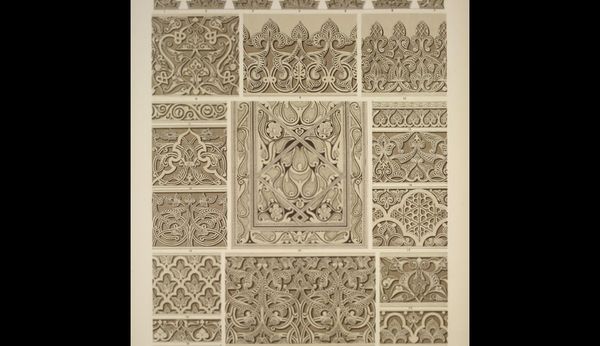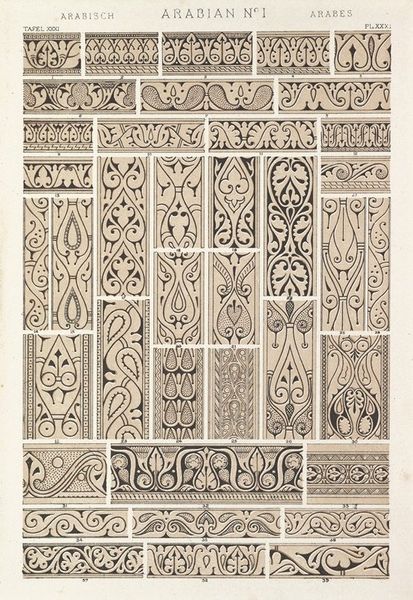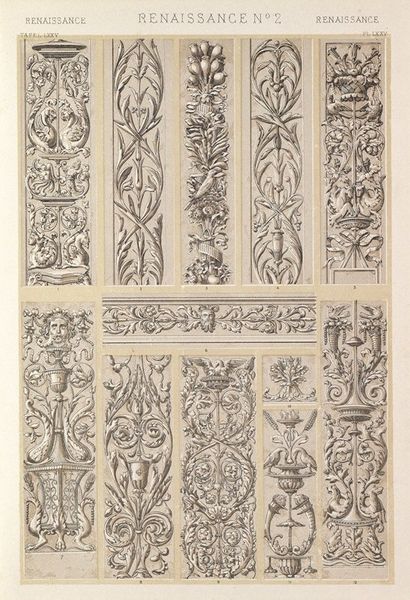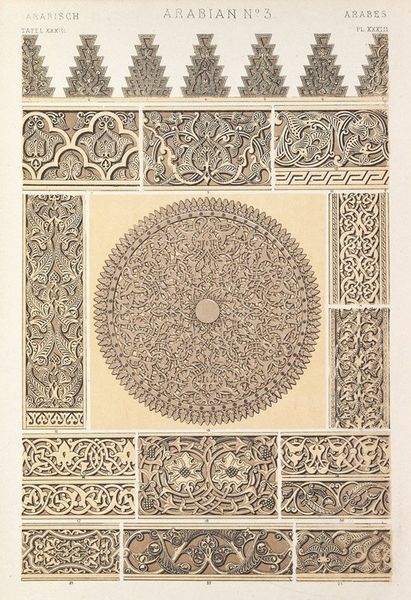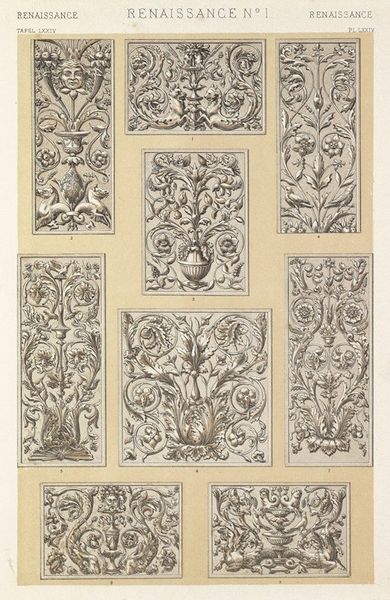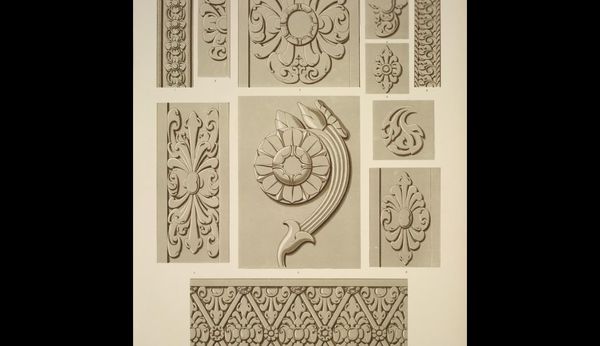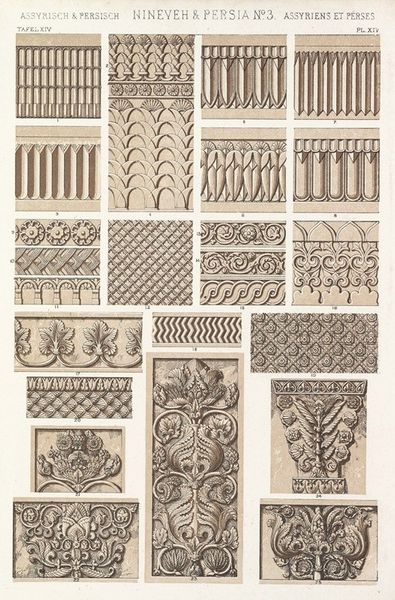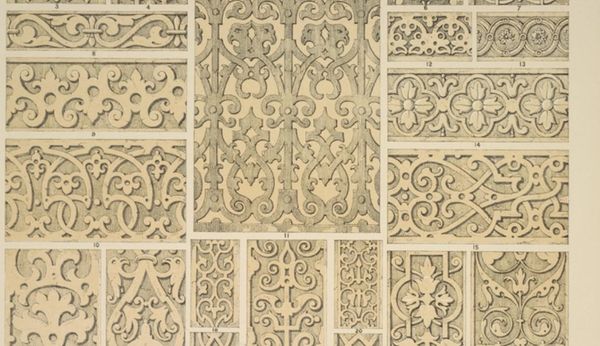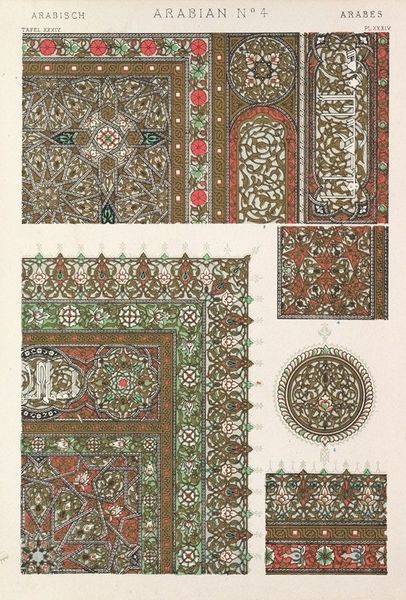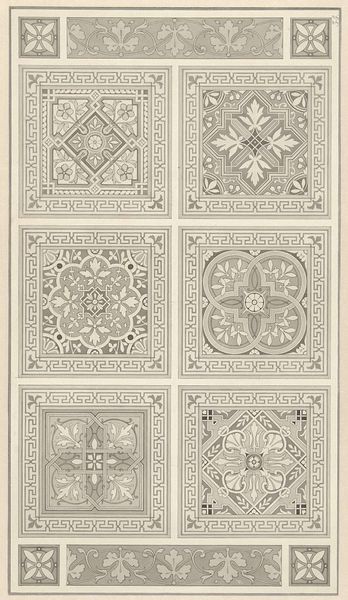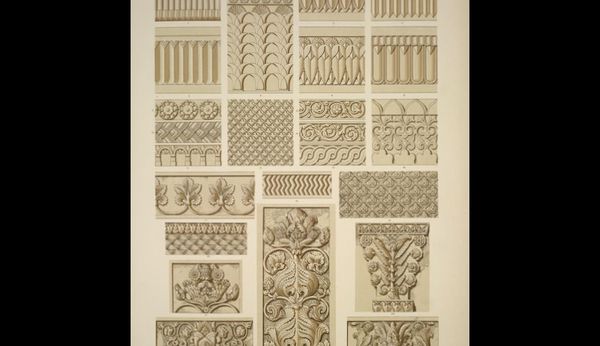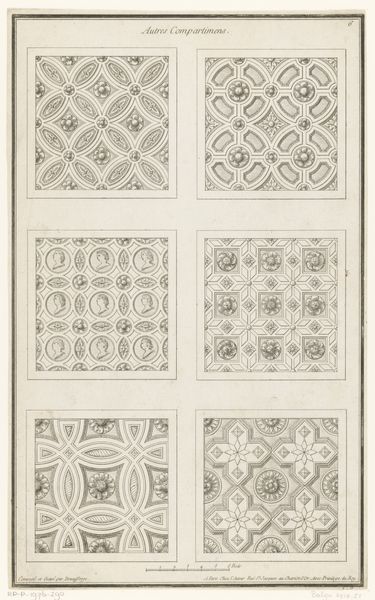
drawing, print
#
drawing
#
natural stone pattern
#
rippled sketch texture
# print
#
repetitive shape and pattern
#
organic pattern
#
geometric
#
repetition of pattern
#
vertical pattern
#
intricate pattern
#
pattern repetition
#
islamic-art
#
decorative-art
#
imprinted textile
#
layered pattern
Copyright: Public Domain: Artvee
Curator: This piece, titled "Arabian No.2," is a print by Owen Jones, created in 1856. What's your initial take? Editor: Immediately, I see incredible detail. It's mesmerizing, a layered and ornate series of designs hinting at a deeper visual language. But where does this fit within the larger artistic conversation of its time? Curator: Jones was hugely influential in the decorative arts. He codified design principles from various cultures in "The Grammar of Ornament." These weren’t just aesthetic choices but deeply connected to social identity and even imperial projects appropriating design. He sought to elevate design through the integration of these elements, although such elevation relied on unequal power dynamics. Editor: Right, "Grammar of Ornament" aimed to make "primitive" designs accessible but really imposed Victorian-era aesthetics. The accessibility was always filtered through a Western lens. I'm seeing the consequences reflected in how easily Islamic art becomes flattened. There are multiple, varied design languages at play; this print isolates segments to study the universality of pattern, yet it risks simplification, losing specificity, and unique social and historical importance. Curator: And yet the impact is undeniable. You can see Jones's designs informing architecture and interior design across the British Empire and beyond. It spoke to a Victorian-era desire to order and classify. Each motif carries significance—floral patterns symbolizing paradise, geometric forms representing the infinite nature of God, and their repetition driving deeper meditation on mortality and rebirth. Editor: What does it mean when visual forms associated with liberation get bound up with colonialism? It creates this very uneasy friction for me. Even as I appreciate the technical skill, I keep wondering whose voices aren't being heard. Who had ownership, say, over these patterns and their significance? And how was that authority handled by Jones’ commercial intentions in disseminating a particular, Western interpretation? Curator: Absolutely, questions around appropriation and representation are vital. Approaching it through this lens highlights both the beauty and potential violence embedded within this "decorative" art. Editor: Looking at it again now, I appreciate how complex those interwoven questions still feel. It certainly complicates my initial reaction and raises the stakes on considering any historical work's long shadow on modern aesthetics.
Comments
No comments
Be the first to comment and join the conversation on the ultimate creative platform.
